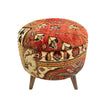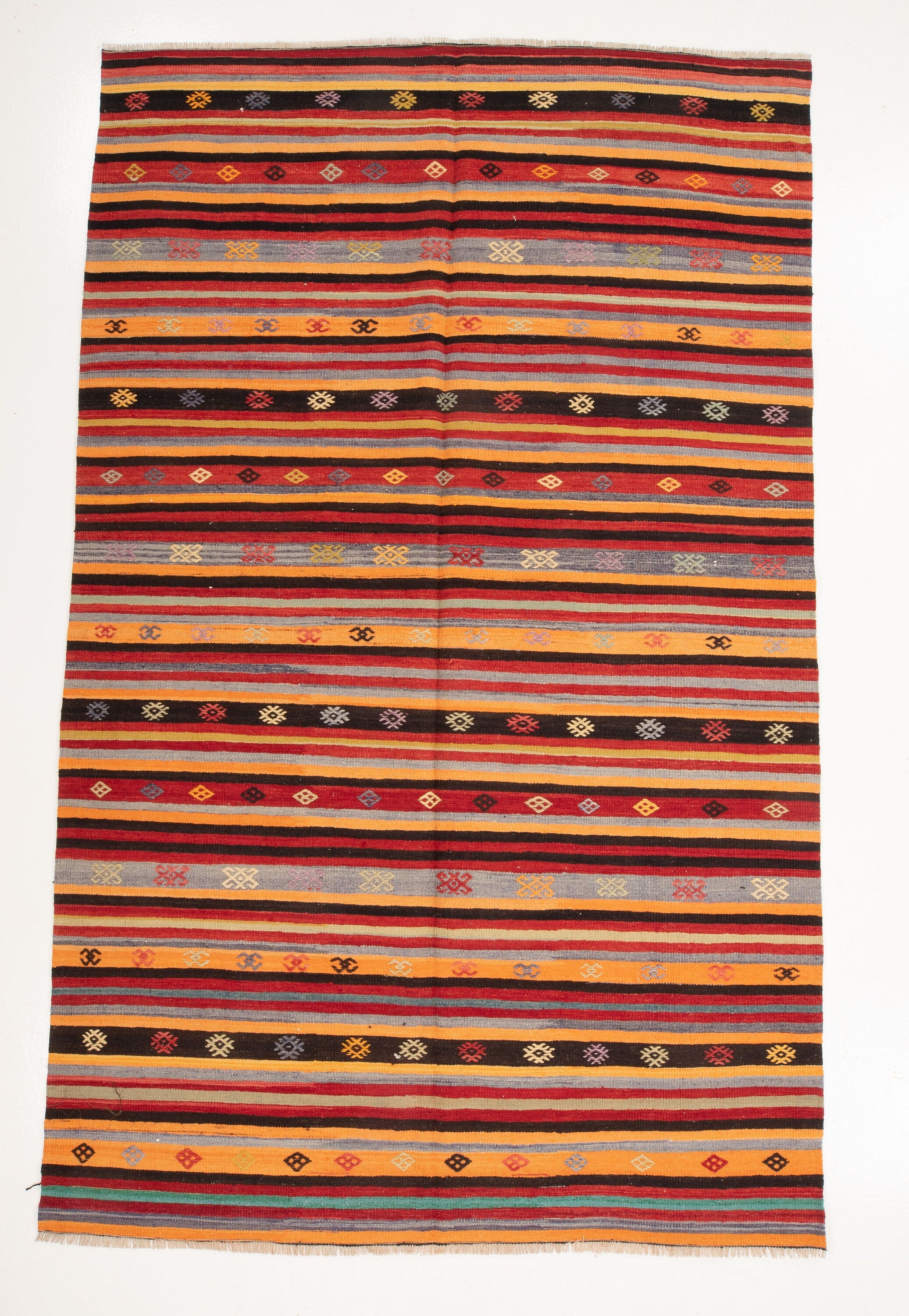
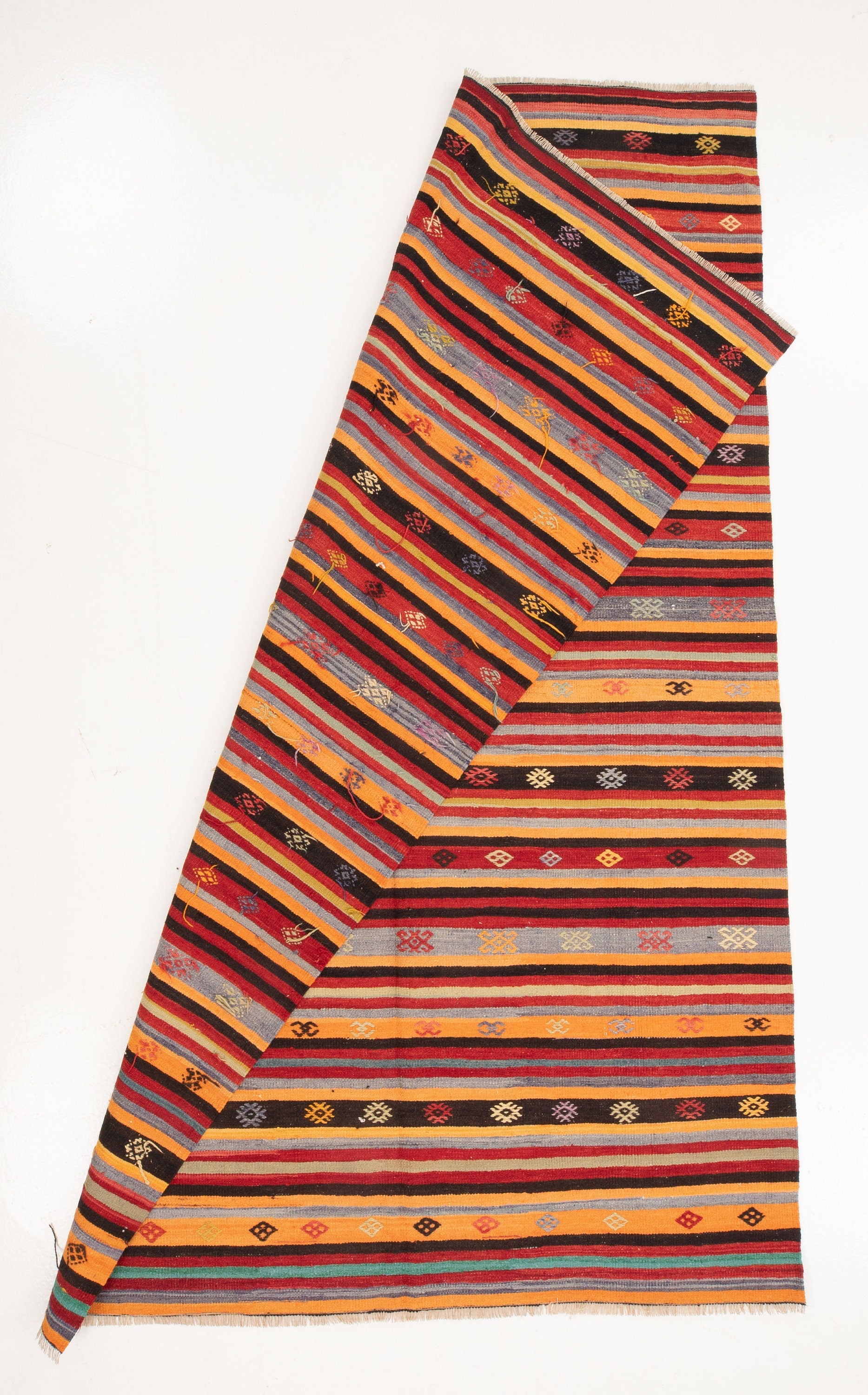
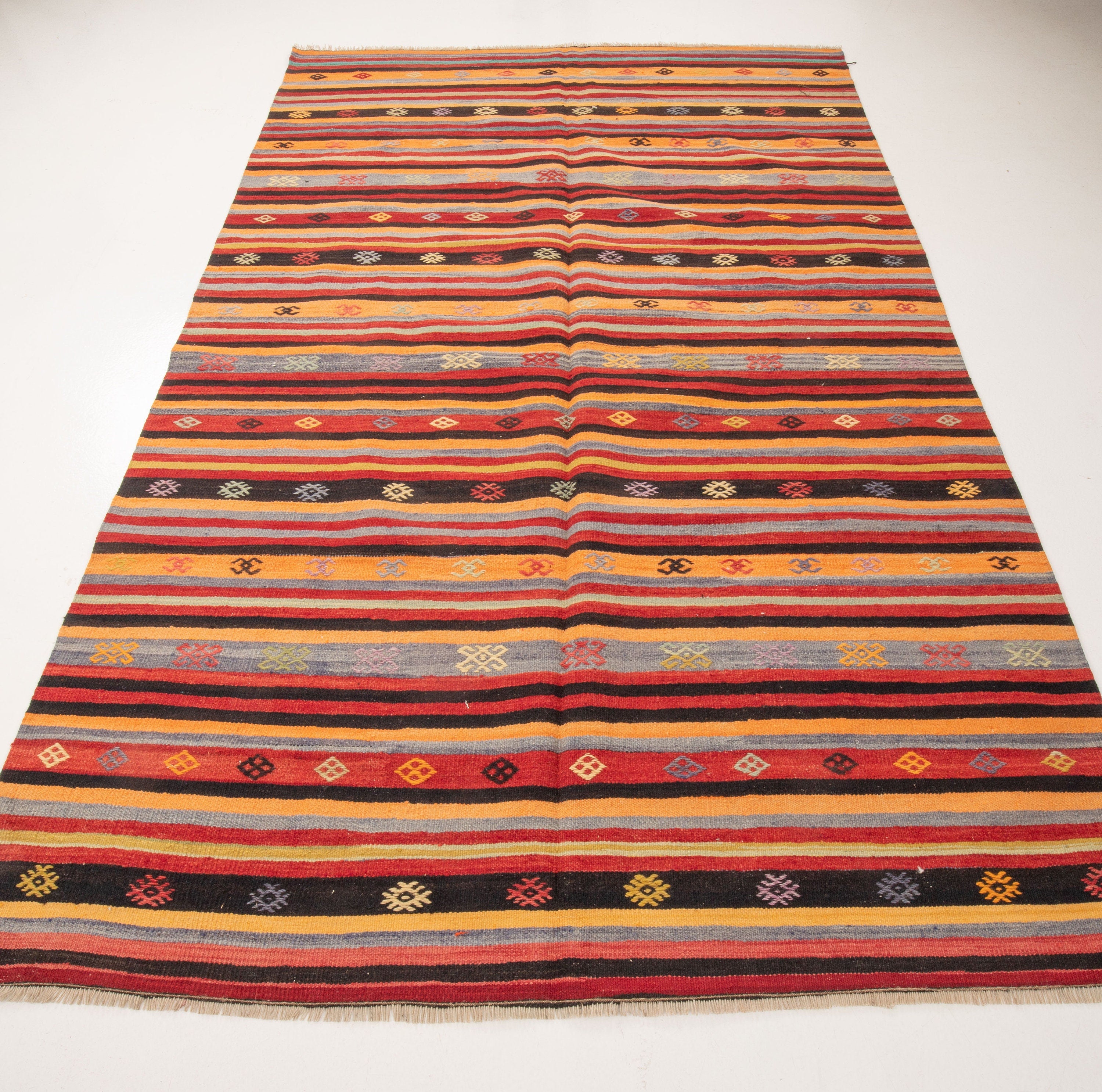
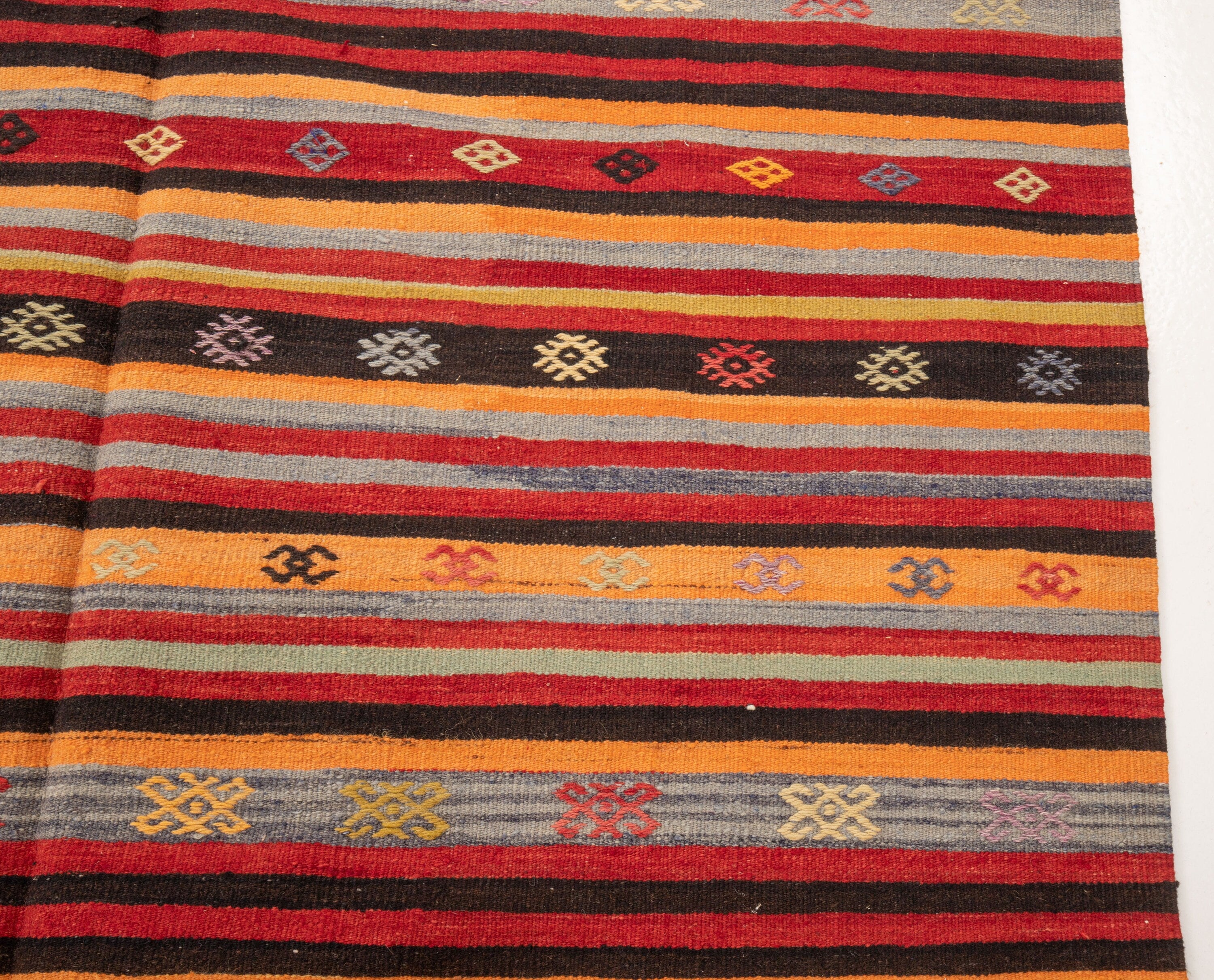
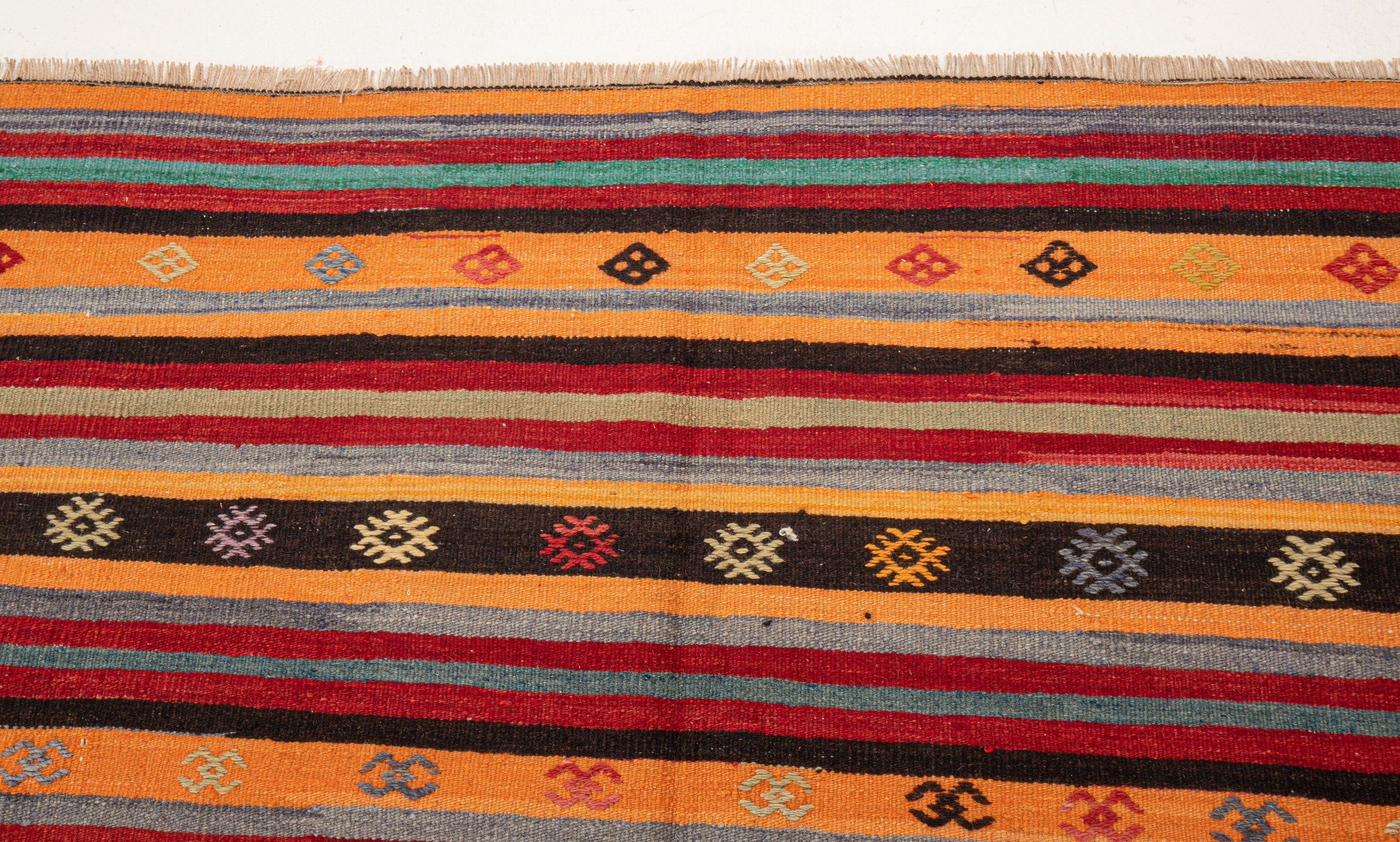
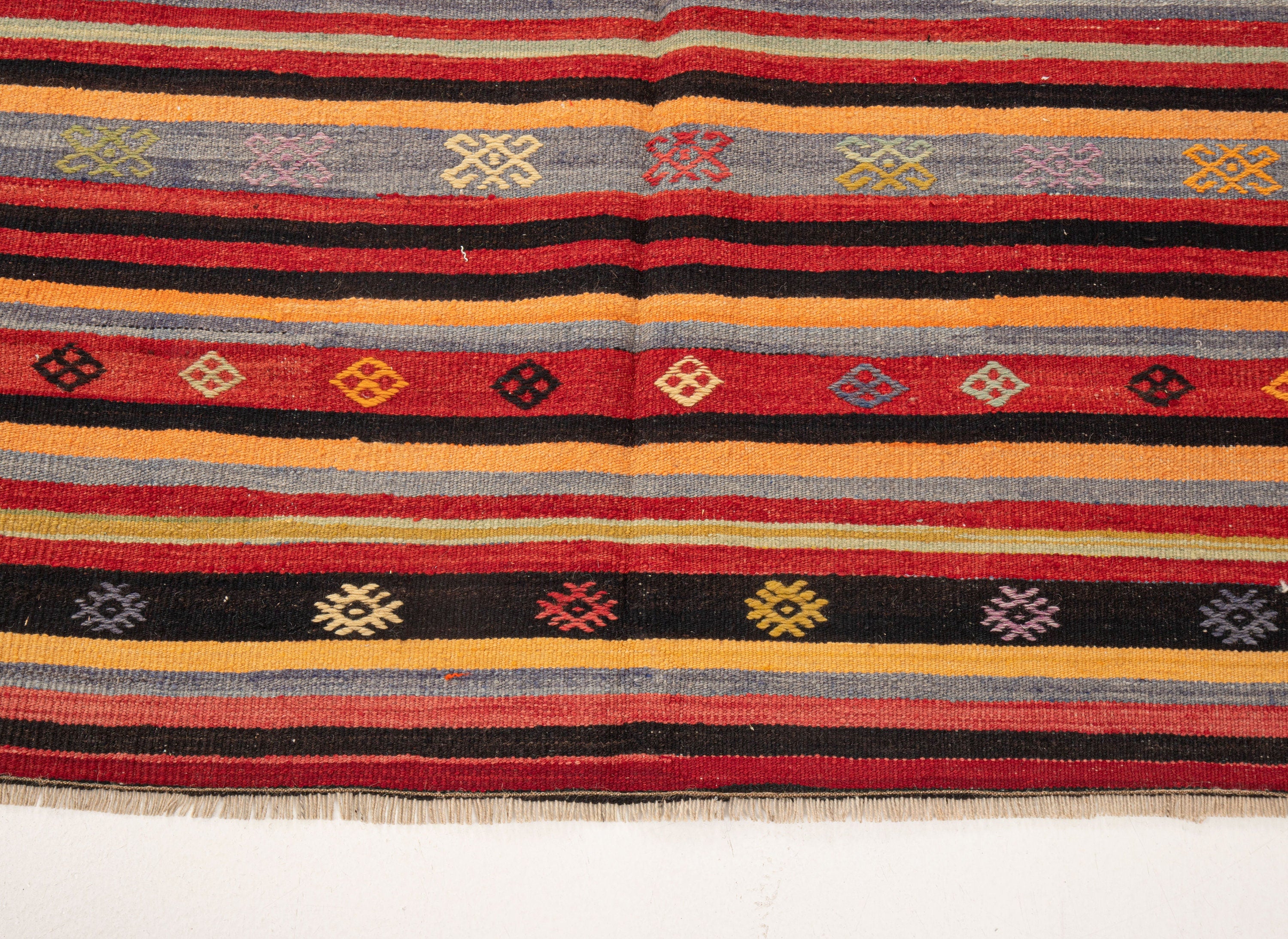
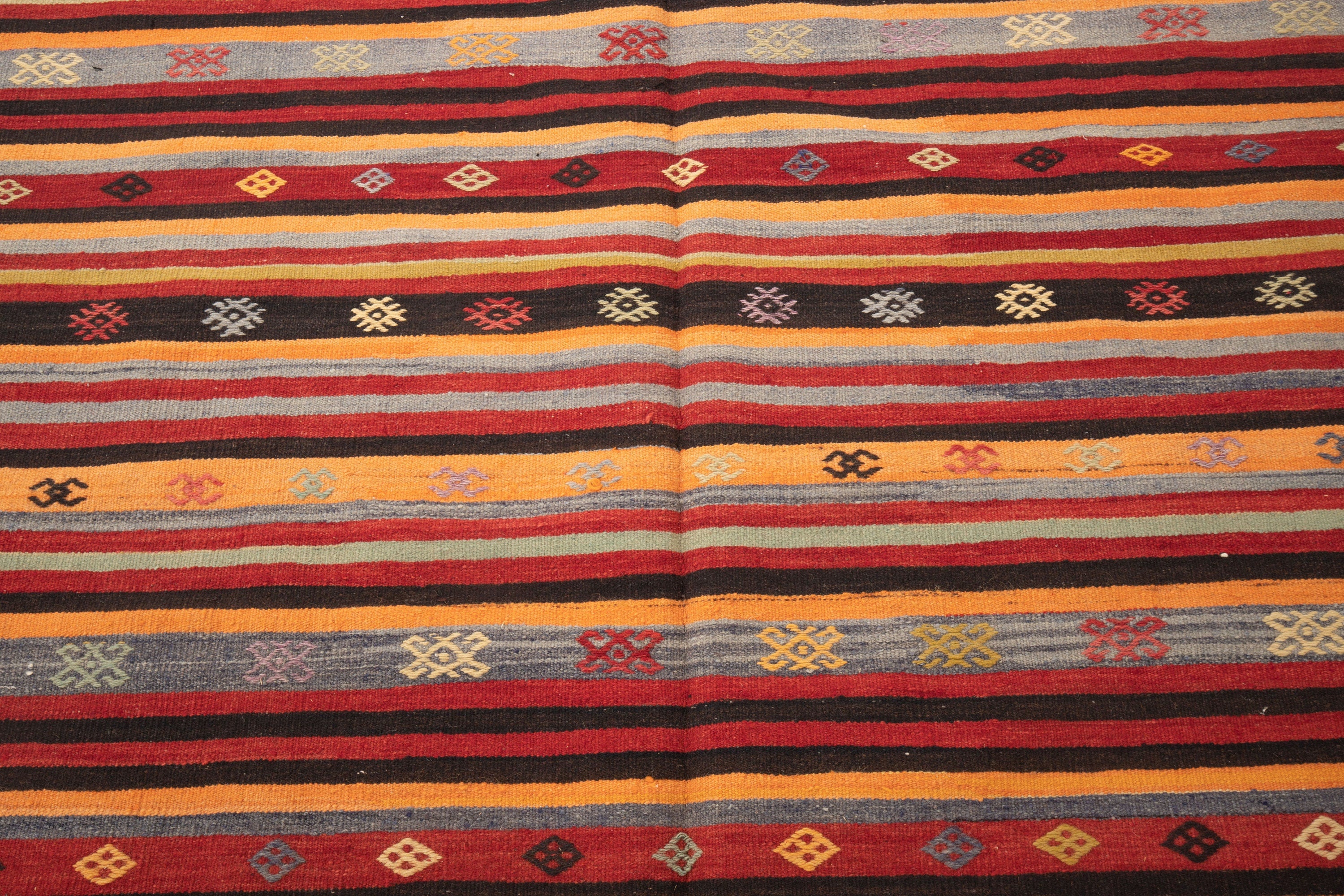
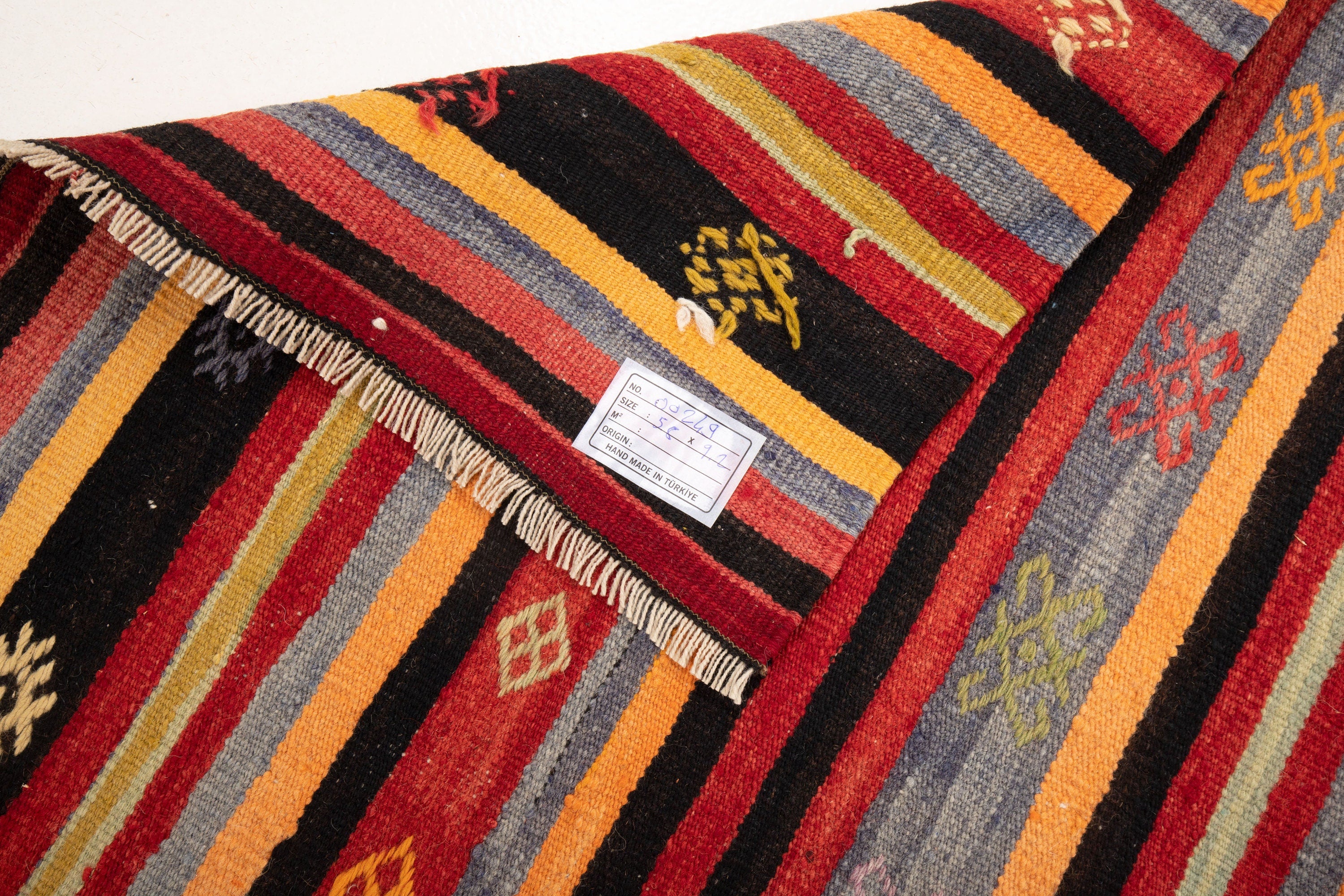
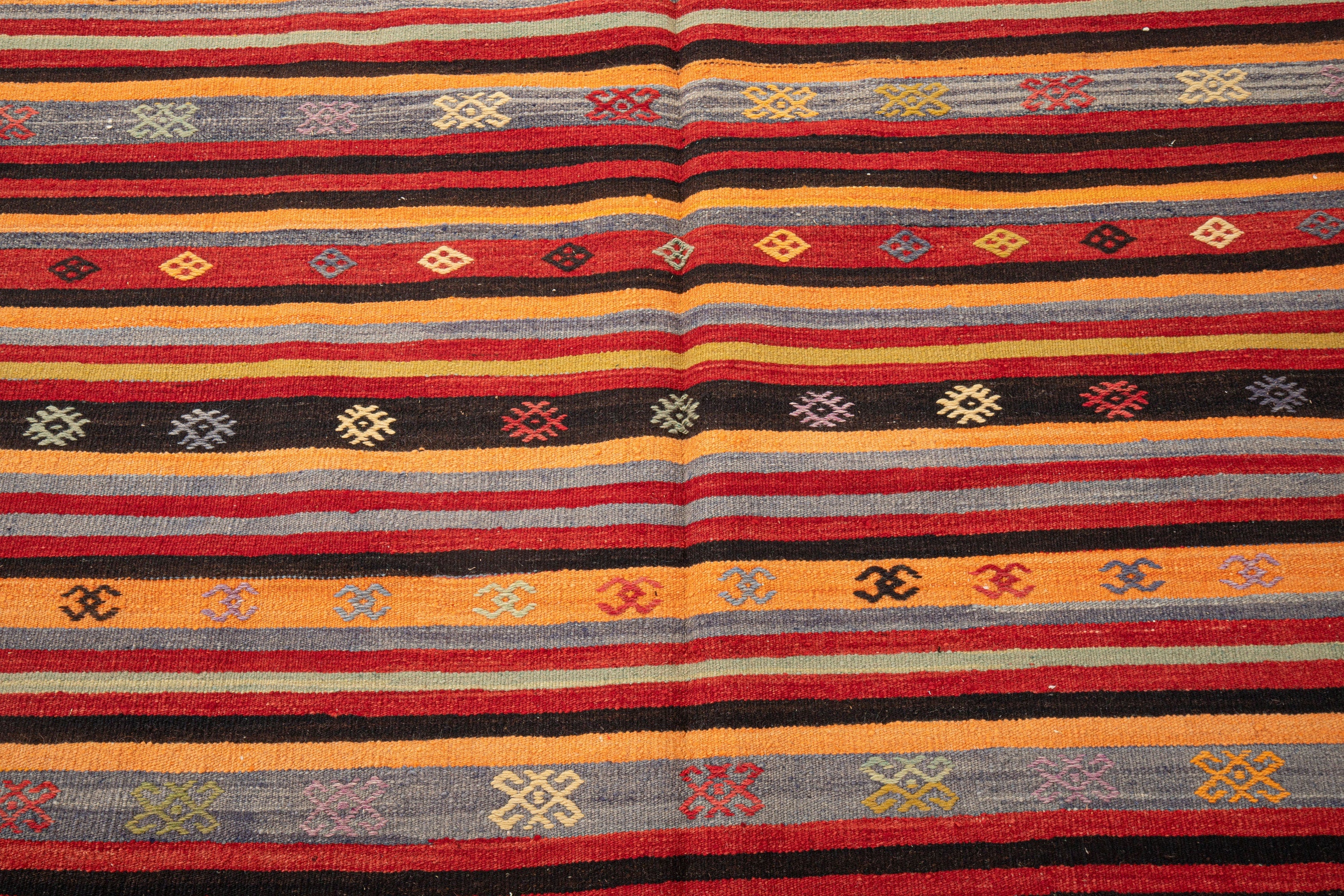
Vintage Turkish Kilim
Description
Turkish kilims are flat-woven rugs or carpets that originate from Turkey. They are known for their unique designs, vibrant colors, and intricate patterns. Kilims have a long history in Turkish culture and are an important part of the country's textile heritage.
Here are some key characteristics and information about Turkish kilims:
* Weaving Technique: Kilims are woven using a flat-weave technique, which means that the threads are interlocked without any knots. This technique creates a thin, flat, and reversible textile.
* Materials: Traditional Turkish kilims are typically made from natural materials, such as wool, cotton, or a combination of both. The choice of materials can affect the texture and durability of the kilim.
* Designs: Turkish kilims are renowned for their intricate geometric and tribal designs. These designs often have cultural and symbolic meanings, and they can vary from region to region. Some common motifs include medallions, stars, animals, and stylized flowers.
* Colors: Kilims are known for their rich and vibrant colors. Turkish artisans use natural dyes as well as synthetic ones to create a wide range of hues. The choice of colors is often influenced by the region's traditional color palette.
* Usage: Turkish kilims have a variety of uses. They can be used as decorative wall hangings, floor coverings, or even as functional items like saddlebags or cushion covers. Their versatility makes them popular both in Turkey and around the world.
* Region-specific Kilims: Different regions of Turkey have their own distinct styles and techniques when it comes to weaving kilims. For example, the kilims from the Anatolian region may have different patterns and colors compared to those from the eastern part of the country.
* Cultural Significance: Kilims are not only functional textiles but also hold cultural and historical significance. They often reflect the traditions and stories of the people who create them. In some cases, kilims are used in religious ceremonies or as gifts during important life events.
* Collectibility: Antique and vintage Turkish kilims are highly sought after by collectors and enthusiasts. The craftsmanship, unique designs, and historical value of these textiles can make them valuable collector's items.
* Maintenance: Turkish kilims are relatively easy to maintain. Regular vacuuming and occasional shaking or beating can help keep them clean. Due to their flat-weave construction, they are less prone to trapping dust and dirt compared to pile rugs.
* Modern Interpretations: While traditional Turkish kilims remain popular, contemporary designers have also embraced the kilim's aesthetic and have created modern interpretations that incorporate traditional motifs and weaving techniques into contemporary designs.
Turkish kilims are not only functional but also carry a rich cultural heritage and artistic expression. They are valued for their beauty, craftsmanship, and the stories they tell about Turkey's history and culture.
Here are some key characteristics and information about Turkish kilims:
* Weaving Technique: Kilims are woven using a flat-weave technique, which means that the threads are interlocked without any knots. This technique creates a thin, flat, and reversible textile.
* Materials: Traditional Turkish kilims are typically made from natural materials, such as wool, cotton, or a combination of both. The choice of materials can affect the texture and durability of the kilim.
* Designs: Turkish kilims are renowned for their intricate geometric and tribal designs. These designs often have cultural and symbolic meanings, and they can vary from region to region. Some common motifs include medallions, stars, animals, and stylized flowers.
* Colors: Kilims are known for their rich and vibrant colors. Turkish artisans use natural dyes as well as synthetic ones to create a wide range of hues. The choice of colors is often influenced by the region's traditional color palette.
* Usage: Turkish kilims have a variety of uses. They can be used as decorative wall hangings, floor coverings, or even as functional items like saddlebags or cushion covers. Their versatility makes them popular both in Turkey and around the world.
* Region-specific Kilims: Different regions of Turkey have their own distinct styles and techniques when it comes to weaving kilims. For example, the kilims from the Anatolian region may have different patterns and colors compared to those from the eastern part of the country.
* Cultural Significance: Kilims are not only functional textiles but also hold cultural and historical significance. They often reflect the traditions and stories of the people who create them. In some cases, kilims are used in religious ceremonies or as gifts during important life events.
* Collectibility: Antique and vintage Turkish kilims are highly sought after by collectors and enthusiasts. The craftsmanship, unique designs, and historical value of these textiles can make them valuable collector's items.
* Maintenance: Turkish kilims are relatively easy to maintain. Regular vacuuming and occasional shaking or beating can help keep them clean. Due to their flat-weave construction, they are less prone to trapping dust and dirt compared to pile rugs.
* Modern Interpretations: While traditional Turkish kilims remain popular, contemporary designers have also embraced the kilim's aesthetic and have created modern interpretations that incorporate traditional motifs and weaving techniques into contemporary designs.
Turkish kilims are not only functional but also carry a rich cultural heritage and artistic expression. They are valued for their beauty, craftsmanship, and the stories they tell about Turkey's history and culture.

Vintage Turkish Kilim
Sale price$650.00
Regular price$0.00 (/)


